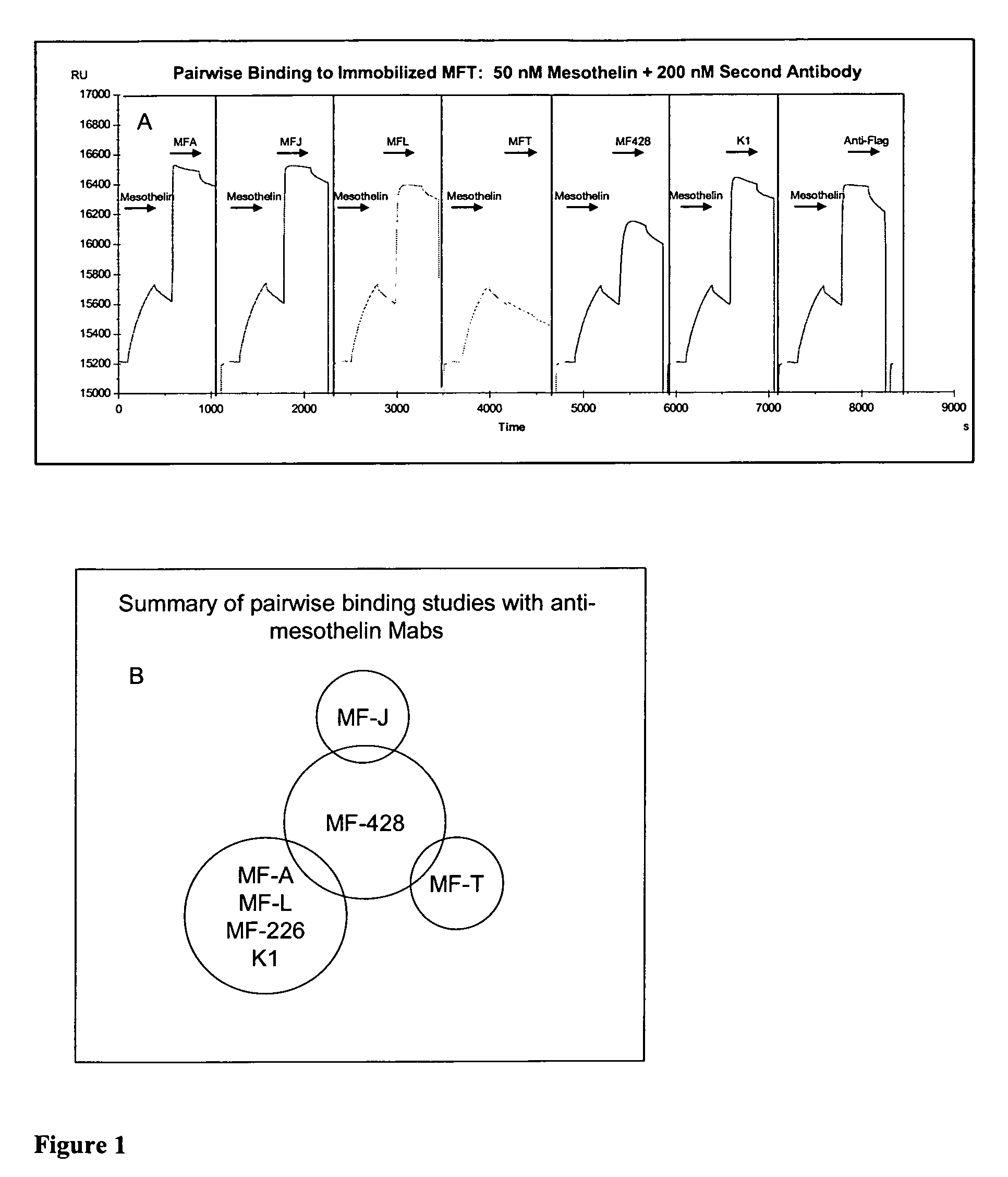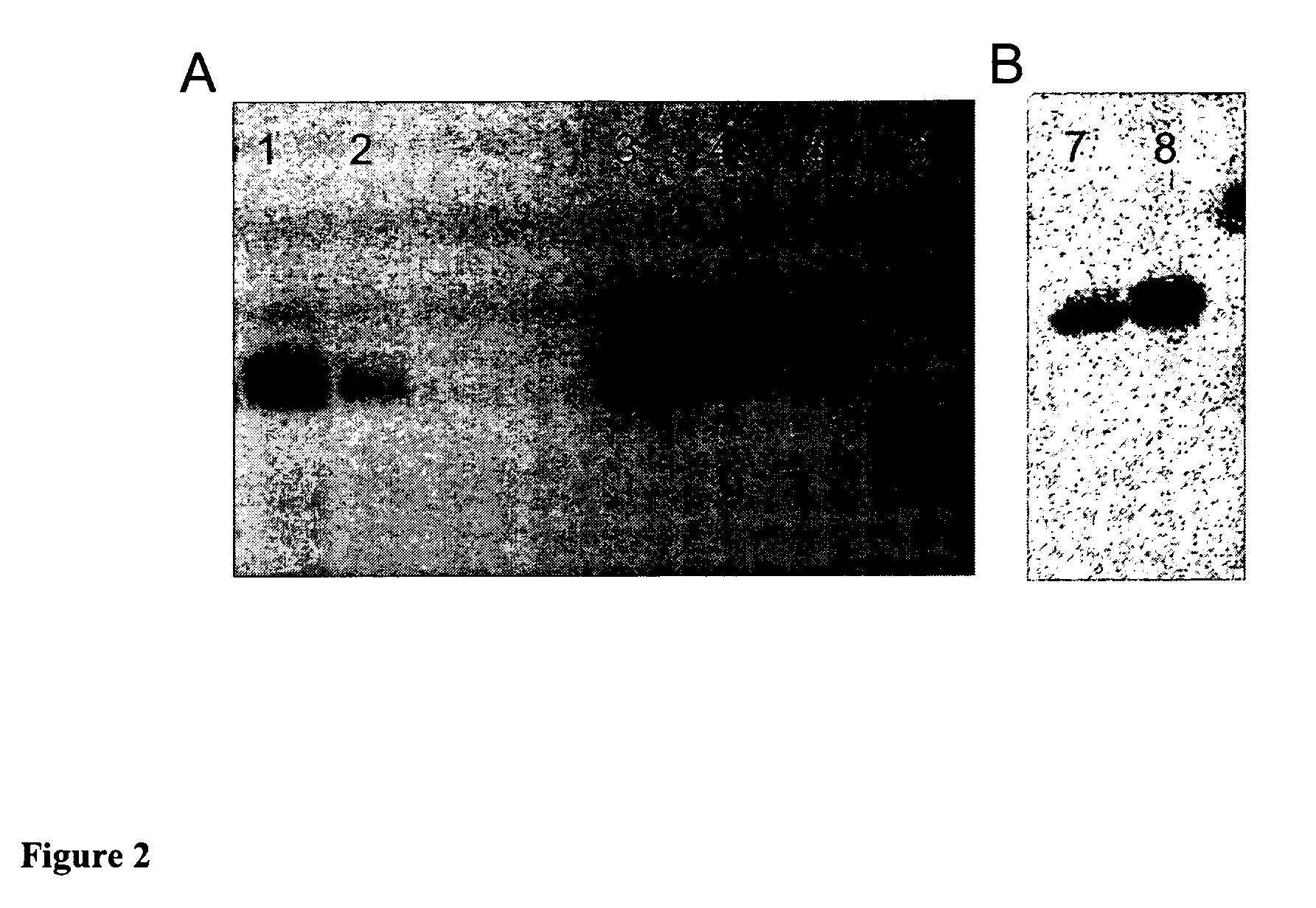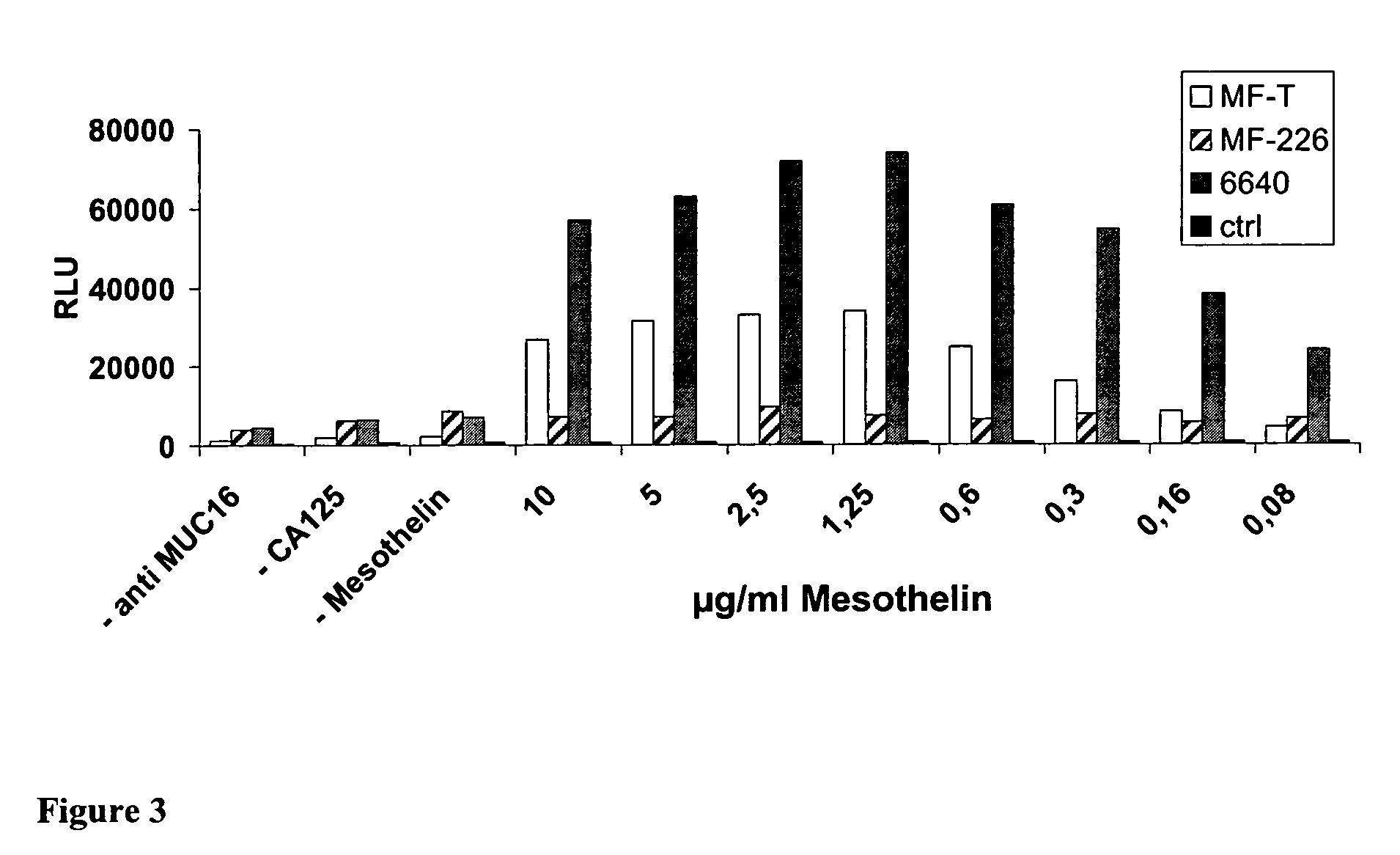Anti-mesothelin antibodies and uses thereof
an anti-mesothelin and antibody technology, applied in the field of antimesothelin antibodies, can solve the problems of reducing unspecific binding to normal tissue, dose-limiting toxicity, or reducing therapeutic potency, and achieve the effect of large therapeutic indices and little
- Summary
- Abstract
- Description
- Claims
- Application Information
AI Technical Summary
Benefits of technology
Problems solved by technology
Method used
Image
Examples
example 1
Antibody Generation from HuCAL Libraries
[0120]For the generation of therapeutic antibodies against mesothelin, selections with the MorphoSys HuCAL GOLD phage display library were carried out. HuCAL GOLD® is a Fab library based on the HuCAL® concept (Knappik, A., et al., J. Mol. Biol. (2000) 296(1): 57; Krebs, B., et al., J. Immunol. Methods. (2001) 254(1-2): 67), in which all six CDRs are diversified, and which employs the CysDisplay™ technology for linking Fab fragments to the phage surface (Löhning, 2001; WO 01 / 05950).
A. Phagemid Rescue, Phage Amplification and Purification
[0121]HuCAL GOLD® phagemid library was amplified in 2×TY medium containing 34 μg / ml chloramphenicol and 1% glucose (2×TY-CG). After helper phage infection (VCSM13) at an OD600 of 0.5 (30 min at 37° C. without shaking; 30 min at 37° C. shaking at 250 rpm), cells were spun down (4120 g; 5 min; 4° C.), resuspended in 2×TY / 34 μg / ml chloramphenicol / 50 μg / ml kanamycin and grown overnight at 22° C. Phages were PEG-prec...
example 2
Epitope Grouping
[0125]Epitope grouping experiments were performed using Biacore by monitoring simultaneous binding of pairs of anti-mesothelin antibodies to immobilized mesothelin. Briefly, the first antibody was covalently immobilized to the sensor chip through primary amine coupling using n-hydroxysuccinamide (NHC) and N-ethyl-N′-dimethylaminopropyl carbodiimide (EDC). Unoccupied binding sites on the surface were then blocked with ethanolamide. Soluble mesothelin was captured on the surface via the immobilized antibody, therefore, the epitope of the capture antibody is blocked for all bound mesothelin molecules. A second antibody was immediately passed over the surface to bind to the immobilized mesothelin. Two antibodies recognizing the same or overlapping epitopes cannot bind to the mesothelin, whereas antibodies with distinct epitopes are able to bind. The antibody surface was regenerated with glycine, pH 2.8, to remove bound proteins and then the process was repeated with othe...
example 3
Cross-Reactivity to Murine Mesothelin
[0126]Shown in Table 5 are results of Biacore and ELISA studies showing cross-reactivity of antibodies of the invention to murine mesothelin. The kinetic constants kon and koff were determined with serial dilutions of the respective purified Fab fragment binding to covalently immobilized human or murine mesothelin using the Biacore 3000 instrument (Biacore, Uppsala, Sweden). Covalent antigen immobilization was achieved by a standard EDC-NHS coupling procedure. Kinetic measurements were done in PBS, pH 7.2 at a flow rate of 20 μl / min using Fab concentration ranging from 1.5-500 nM. Injection time for each concentration was 1 min, followed by 3 min dissociation phase. For regeneration 5 μl 10 mM glycine buffer, pH 1.8 was used. All sensograms were fitted using the BIA evaluation software 3.1 (Biacore).
TABLE 5Monovalent anti-mesothelin antibody affinities to human andmurine mesothelin (Fab formats)Human mesothelinMurine mesothelinAntibody (Fab)KD [M...
PUM
| Property | Measurement | Unit |
|---|---|---|
| non-permissive temperature | aaaaa | aaaaa |
| non-permissive temperature | aaaaa | aaaaa |
| OD | aaaaa | aaaaa |
Abstract
Description
Claims
Application Information
 Login to View More
Login to View More - R&D
- Intellectual Property
- Life Sciences
- Materials
- Tech Scout
- Unparalleled Data Quality
- Higher Quality Content
- 60% Fewer Hallucinations
Browse by: Latest US Patents, China's latest patents, Technical Efficacy Thesaurus, Application Domain, Technology Topic, Popular Technical Reports.
© 2025 PatSnap. All rights reserved.Legal|Privacy policy|Modern Slavery Act Transparency Statement|Sitemap|About US| Contact US: help@patsnap.com



